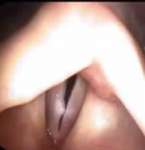Vocal cord nodules are most always due to excessive voice use leading to "callous" formation on the vocal cord lining, much like shoveling dirt will eventually lead to callous formation on the hands.
Traditional standard of care management of vocal cord nodules is voice therapy and avoidance of any activities leading to voice abuse (screaming, yelling, etc). However, resolution of nodules with such behavior focused treatment takes months. However, although it takes a while for the nodules to resolve with this treatment method, they typically do not come back.
For patients who are more "impatient" for results, there are more aggressive ways to address vocal cord nodules with resolution within weeks. However, the caveat is if the underlying voice behavior that led to nodule formation in first place is not addressed, the vocal cord nodule WILL recur after initial resolution/improvement.
Recently, there have been several studies that have shown that steroid injection directly into vocal cord nodule can resolve or reduce the nodule resulting in improved vocal quality within weeks. Such local injection technique has mainly been performed in the treatment of spasmodic dysphonia (botox injection), vocal cord granulomas, and vocal cord paralysis.
In the most recent study published Oct 2011, researchers have found that in a group of 80 patients, 44% had complete resolution of the nodule and another 49% had improvement within 4 weeks after injection of the nodule with Kenalog 40. 8% had recurrence of the nodule after initial improvement due to persisting in a high voice-use occupation. 4 patients suffered vocal cord atrophy and 2 patients developed a white plaque that resolved spontaneously 1-2 months after injection.
Watch a video how a "local injection" to the vocal cord can be performed (video shows injection of vocal cord granuloma rather than nodule, but overall approach is identical).
Beyond voice therapy and steroid injections, there are other ways of dealing with vocal cord nodules, but also have a high risk of recurrence if underlying abusive voice behavior that led to the nodule formation in first place is not first addressed.
• Surgical excision can be performed, but can lead to permanent scar formation during the healing process that can lead to persistent hoarseness.
• Botox injection can also be pursued which causes a "partial" vocal cord paralysis preventing the repetitive trauma in the region of the vocal cord nodule.
Read more about vocal cord nodules here.
References:
Local steroid injection via the cricothyroid membrane in patients with a vocal nodule. Arch Otolaryngol Head Neck Surg. 2011;137(10):1011-1016. doi:10.1001/archoto.2011.168
Steroid injection to vocal nodules using fiberoptic laryngeal surgery under topical anesthesia. Eur Arch Otorhinoloaryngol. 2004. 261(9):489-492.
Laryngeal steroid injection. Curr Opin Otolarngol Head Neck Surg. 2009. 17(6): 424-426.
Office Steroid Injections of the Larynx. Laryngoscope. 2006. 116(10):1735-1739.
Percutaneous corticosteroid injection for vocal fold polyp. Arch Otolaryngol Head Neck Surg. 2009. 135(8):776-780.
Intracordal injection of dexamethasone. Pract Otorhinoloaryngol (Basel). 1964. 57(3):496-500.

















0 comments:
Post a Comment